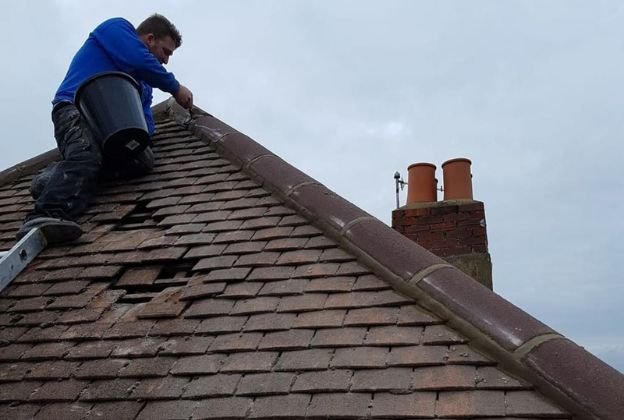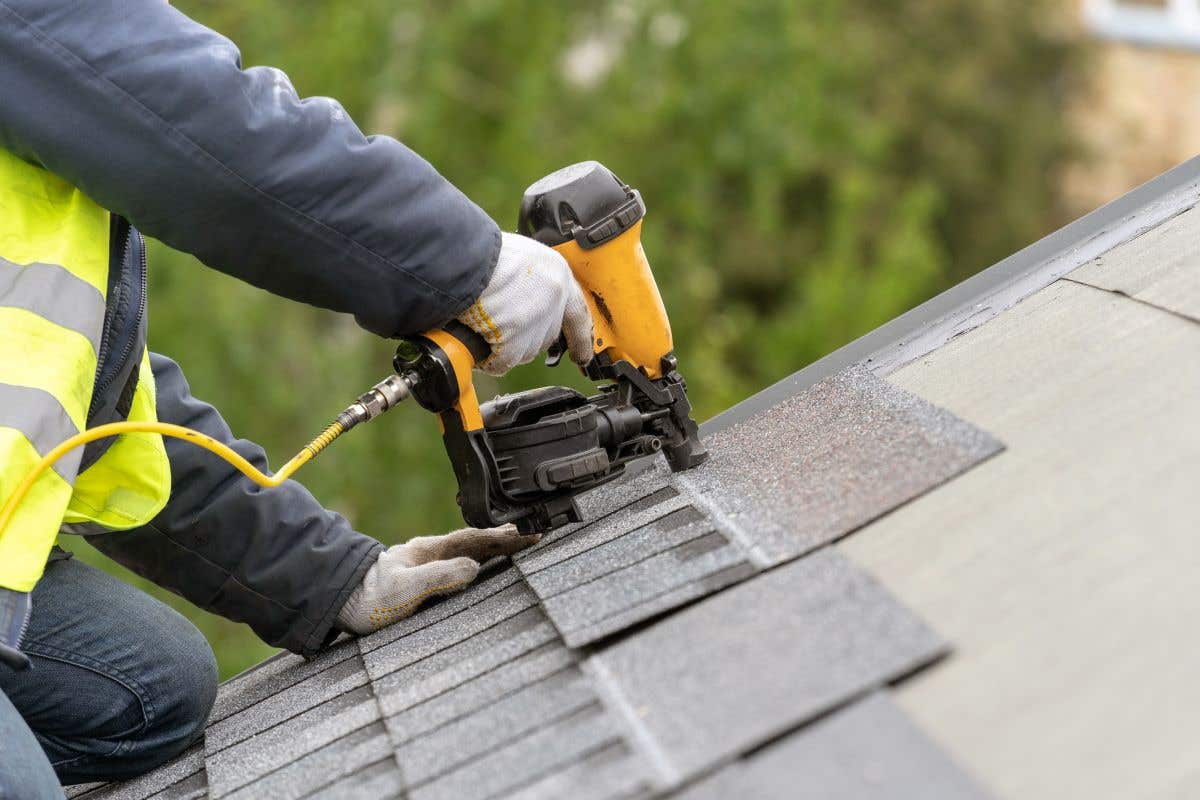Roofing Companies Oahu: Premier Roofers for All Roofing Projects
Roofing Companies Oahu: Premier Roofers for All Roofing Projects
Blog Article
Understanding the Different Types of Roofs: A Comprehensive Overview for Homeowners
In the world of homeownership, picking the proper roof style is a decision that lugs significant implications for both functionality and aesthetic appeal. With an array of options-- ranging from the typical gable to the modern flat-- each kind provides distinct advantages and difficulties that ought to line up with the home owner's details requirements and ecological considerations. Comprehending these differences not only help in making an enlightened option but also influences lasting upkeep and energy performance. As we discover the ins and outs of various roof covering types, it becomes obvious that a person size does not fit all; the best selection might amaze you.
Gable Roof Coverings
Gable roofing systems, defined by their triangular shape, are amongst one of the most popular roof covering styles because of their simplicity and efficiency in dropping water and snow. This layout features 2 sloping sides that meet at a ridge, enabling for effective water drainage and reducing the danger of water build-up. The steep pitch typically connected with gable roofs enhances their ability to take care of heavy rainfall, making them suitable for various climates.
In addition to their useful advantages, saddleback roofs use visual flexibility. They can be adapted to different architectural styles, from conventional to modern-day homes. The layout can likewise fit added functions such as dormer windows, which improve natural light and ventilation in the attic space.
In addition, gable roofs offer ample area for insulation, contributing to power performance. Homeowners can select from a range of roof materials, including asphalt tiles, steel, and floor tiles, further enhancing modification options.
In spite of their advantages, gable roofing systems may call for added assistance in areas prone to high winds or heavy snowfall. Overall, the saddleback roof continues to be a preferred choice as a result of its blend of performance, toughness, and visual appeal.
Flat Roofs
Level roofings are often identified for their minimal style and sensible applications, especially in industrial and commercial setups (oahu roofing). These roofings feature a horizontal or almost straight surface, which enables very easy building and functional room use. While they may lack the visual allure of angled roofs, flat roof coverings use various advantages, especially in urban settings where optimizing space is crucial
One of the primary advantages of level roof coverings is their availability. Home owners can use the roof space for different purposes, such as rooftop yards, terraces, or solar panel installments. Furthermore, flat roofing systems are usually more affordable to install and preserve compared to their sloped counterparts, as they need fewer products and labor.
Usual materials utilized for level roofings include built-up roof (BUR), customized bitumen, and single-ply membranes, each offering distinctive advantages. Overall, level roof coverings offer as a useful and versatile choice for lots of house owners and services alike.
Hip Roofings
Hip roofs are characterized by their sloped sides that assemble on top, creating a ridge. This layout stands out from gable roofings, as all four sides of a hip roofing incline downwards toward the walls, giving a much more stable structure. The angle of the inclines can vary, permitting adaptability in architectural aesthetics and performance.
One of the main benefits of hip roofings is their capacity to withstand hefty winds and adverse climate condition. The sloped surface areas allow far better water drainage, reducing the danger of leaks and water damage. Additionally, hip roofs use enhanced attic room area, which can be made use of for storage space and even exchanged livable areas.
However, building a hip roofing system can be extra complicated and costly than simpler roofing types, such as saddleback roofs. The extra material and labor involved in developing the slopes and guaranteeing appropriate architectural stability can lead to greater expenditures. In spite of these drawbacks, many home owners prefer hip roofings for their toughness, aesthetic allure, and capacity for energy efficiency.
Mansard Roofs
Mansard roofings, usually recognized by their distinct four-sided style, feature two inclines on each side, with the lower incline being steeper than the top. This building design, originating from France in the 17th century, is not only visually appealing but useful, as it makes the most of the usable room in the top floorings of a structure. The high reduced incline permits even more clearance, making it a perfect choice for lofts or attic rooms, which can be transformed right into living areas.
Mansard roof coverings are defined by their flexibility, fitting numerous building styles, from traditional to modern-day. They can be created with various materials, including asphalt shingles, slate, or metal, offering property owners with a variety of options to fit their budgets and preferences. Furthermore, the design enables the assimilation of dormer windows, improving all-natural light and ventilation in the upper degrees.
Nevertheless, it is vital to take into consideration the prospective drawbacks. Mansard roof coverings may require even more maintenance as a result click to read more of the complexity of their design, and their high inclines can be testing for snow and rain drainage. Generally, mansard roof coverings combine sophistication with practicality, making them a preferred option amongst home owners looking for distinctive building functions.
Shed Roof Coverings
As home owners significantly look for simpleness and capability in their architectural layouts, lost roofing systems have actually become a popular selection. Identified by a solitary view publisher site sloping airplane, a shed roofing offers a minimalist visual that complements numerous home designs, from contemporary to rustic.
One of the key advantages of a shed roofing is its uncomplicated building, which usually translates to decrease labor and material costs. This design enables effective water drainage, lowering the risk of leaks and water damage. In addition, the vertical incline gives adequate space for skylights, improving all-natural light within the interior.
Dropped roofing systems also use flexibility in terms of usage. They can be successfully integrated into additions, garages, or exterior frameworks like sheds and structures. In addition, this roof design can suit various roof covering materials, consisting of metal, asphalt shingles, or also environment-friendly roofs, aligning with environment-friendly initiatives.
However, it click is important to think about local environment problems, as heavy snow tons may necessitate changes to the roofing's angle or framework. In general, shed roof coverings provide a useful and cosmetically pleasing alternative for property owners aiming to make best use of capability without endangering design.
Conclusion


Gable roofing systems, identified by their triangular form, are among the most prominent roof covering designs due to their simpleness and effectiveness in losing water and snow. oahu roofing. The high pitch typically linked with gable roof coverings enhances their ability to handle heavy precipitation, making them ideal for various environments
While they might do not have the aesthetic appeal of pitched roofing systems, flat roofs provide many advantages, particularly in city environments where making the most of space is important.

Report this page